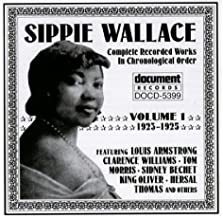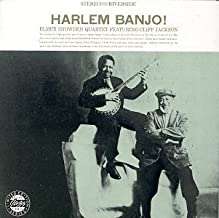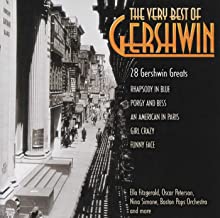
Daily Dose Of Jazz…
Achille Joseph Baquet was born on November 15, 1885 in New Orleans, Louisiana into a musical family whose patriarch, Théogène, led the Excelsior Brass Band. He learned the clarinet from Luis “Papa” Tio and was thought to have been a member of the Whiteway Jazz Band.
Moving to New York City in 1918, then ragtime pianist, vocalist, and leader Jimmy Durante, the only member not from New Orleans, hired him to play with the Original Dixieland Jazz Band that was founded by Johnny Stein. He would go on to work with Papa Jack Laine’s Reliance Brass Band and was part of the clarinet section of the Happy Schilling Dance Orchestra.
Baquet’s credits as a composer include Why Cry Blues, written with Jimmy Durante. According to Papa Jack Laine, he co-wrote Livery Stable Blues with Acide “Yellow” Nunez.
Clarinetist and saxophonist Achille Baquet, who was a light-skinned black man able to pass for white, passed away on November 20, 1956 in his hometown.
More Posts: clarinet,history,instrumental,jazz,music,saxophone

Daily Dose Of Jazz…
Sippie Wallace was born Beulah Belle Thomas on November 1, 1898 in Plum Bayou, Jefferson County, Arkansas, one of thirteen children. Coming from a musical family, two of her brothers and a niece had prolific music careers. As a child, her family moved to Houston, Texas, and growing up she sang and played the piano in Shiloh Baptist Church but at night she and her siblings would sneak out to tent shows. By her mid-teens, they were playing in those tent shows, performing in various Texas shows, building a solid following as a spirited blues singer.
Along with her brother Hersal, Wallace moved to New Orleans, Louisiana in 1915 and two years later she married Matt Wallace and took his surname. She followed her brothers to Chicago, Illinois in 1923 and worked her way into the city’s bustling jazz scene. Hersal died three years later, but her reputation led to a recording contract with Okeh Records that same year with her first recorded songs, Shorty George and Up the Country Blues, sold well enough to make her a blues star in the early 1920s. Moving to Detroit, Michigan in 1929, she would lose her husband and her brother George in 1936.
For some 40 years, Sippie sang and played the organ at the Leland Baptist Church in Detroit. From 1945 she basically retired from music until launching a comeback in 1966, recording an album, Women Be Wise, on October 31st in Copenhagen, Denmark, with Roosevelt Sykes and Little Brother Montgomery playing the piano. Over the course of her career, she worked with Louis Armstrong, Johnny Dodds, Sidney Bechet, King Oliver, and Clarence Williams.
Singer, songwriter, pianist, and organist Sippie Wallace, who was nominated for a Grammy Award in 1982 and was posthumously inducted into the Michigan Women’s Hall of Fame in 1993, passed away at Sinai Hospital in Detroit, Michigan from complications of a severe stroke suffered post~concert in Germany on November 1, 1986. She was 88.
More Posts: history,instrumental,jazz,music,organ,piano,songwriter,vocal

Daily Dose Of Jazz…
Elmer Chester Snowden was born on October 9, 1900 in Baltimore, Maryland and by 1917, a month before his 17th birthday, his listed occupation was a musician. While still living at home with his mother in 1920, the census had him employed as a musician in a dance hall.
The original leader of the Washingtonians, he brought the group to New York City in 1923. However, unable to get a booking, he sent for Duke Ellington, who was with the group when it recorded three test sides for Victor and who eventually took over leadership, and that band became his famous orchestra.
Making numerous appearances as a session musician, sideman, or accompanist on almost every New York City label from 1923 on, Elmer was often in trios with Bob Fuller on clarinet and Lou Hooper on piano. They rarely received credit for their work during those days but did show up on two Bessie Smith sides and six sides for the Sepia Serenaders.
Snowden was also a renowned bandleader who employed at one time or another Count Basie, Jimmie Lunceford, Bubber Miley, “Tricky Sam” Nanton, Frankie Newton, Benny Carter, Rex Stewart, Roy Eldridge, and Chick Webb in his various bands.
So active in the 1920s he was an agent and musician, and at one time had five bands playing under his name in New York, one of which was led by pianist Cliff Jackson. Most of his bands were not recorded, but a Snowden band that included Eldridge, Al Sears, Dicky Wells, and Sid Catlett appeared in a 1932 film, Smash Your Baggage.
By the mid-1930s his career was one of relative obscurity in New York, however, he continued to play throughout the 30s, 40s and 50s far from the limelight. A dispute with the New York Musicians Union, he moved to Philadelphia, Pennsylvania where he taught music. Counted among his pupils were pianist Ray Bryant, his brother, bassist Tommy Bryant, and saxophonist Sahib Shihab.
Working as a parking lot attendant in 1959 disc jockey Chris Albertson, ran across him and the following year brought Snowden and singer-guitarist Lonnie Johnson together for two Prestige albums. He assembled a quartet that included Cliff Jackson for a Riverside session, Harlem Banjo, and, in 1961 he put together a sextet session with Roy Eldridge, Bud Freeman, Jo Jones, and Ray and Tommy Bryant that was released on the Fontana and Black Lion labels.
Appearing at the 1963 Newport Jazz Festival gave his career a boost, then he moved to California to teach at the University of California, Berkeley, and played with Turk Murphy as well as taking private students for lessons in guitar and banjo. He toured Europe in 1967 with the Newport Guitar Workshop. In 1969, banjoist Elmer Snowden, who also played guitar and all the reed instruments, and is responsible for launching the careers of many top musicians, moved back to Philadelphia, where he passed away on May 14, 1973.
More Posts: bandleader,banjo,history,instrumental,jazz,music

Daily Dose Of Jazz…
George Gershwin was born Jacob Bruskin Gershowitz on September 26, 1898 in Brooklyn, New York. When his parents bought his older brother Ira a piano, it was the younger George who spent most of his time playing it. He studied piano under Charles Hambitzer and composition with Rubin Goldmark, Henry Cowell, and Joseph Brody.
He began his career as a song plugger but soon started composing Broadway theater works with his brother Ira Gershwin and with Buddy DeSylva. In 1919 he scored his first big national hit with his song Swanee, with words by Irving Caesar.
In the late 1910s, Gershwin met songwriter and music director William Daly and the two collaborated on the Broadway musicals Piccadilly to Broadway in 1920 and For Goodness’ Sake in 1922, and jointly composed the score for Our Nell the following year. This was the beginning of a long friendship and collaboration as Daly was a frequent arranger, orchestrator, and conductor of Gershwin’s music.
Moving to Paris, France intending to study with Nadia Boulanger. Refusing him, he subsequently composed An American in Paris, before returning to New York City and writing Porgy and Bess with Ira and DuBose Heyward. Unfortunately for them, it was initially a commercial failure, however, years later it came to be one of the most important American classic operas of the twentieth century.
After the commercial failure of Porgy and Bess, George moved to Hollywood, California. In 1936, with a commission from RKO Pictures, he wrote the music for the Fred Astaire/Ginger Rogers film Shall We Dance. His extended score, which would marry ballet with jazz in a new way, runs over an hour in length. It took Gershwin several months to compose and orchestrate.
Gershwin had a ten-year affair with composer Kay Swift, whom he frequently consulted about his music. The two never married, but he titled his 1926 musical Oh, Kay for her. His compositions have been adapted for use in film and television, with several becoming jazz standards recorded and covered in many variations.
Composer and pianist George Gershwin, whose compositions spanned both popular and classical genres, passed away at 38 from a malignant brain tumor on July 11, 1937 in Los Angeles, California.

Daily Dose Of Jazz…
Charlie H. “Devil” Gaines was born on August 8, 1900 in Philadelphia, Pennsylvania. As a teenager, Gaine played in brass bands in his hometown before moving to New York City in 1920. It was there that he joined the orchestra of Wilbur Sweatman.
Signing on with Clarence Williams’s house band, he went on to play with Sam Wooding, Earl Walton, Leroy Smith, Fats Waller, Charlie Johnson, and the Hot Chocolates.
In the 1930s Gaines launched his own band in Philadelphia, recorded occasionally, including once with Williams in 1934. Simultaneously he continued playing with Smith while playing in Louis Armstrong’s orchestra. He continued to lead bands in Philadelphia into the 1950s, especially at the jazz venue Carroll’s.
The 1960s saw him performing in a trio at the Hangover Club until he went into retirement in the 1970s. Trumpeter and bandleader Charlie Gaines passed away on November 23, 1986.
More Posts: bandleader,history,instrumental,jazz,music,trumpet





